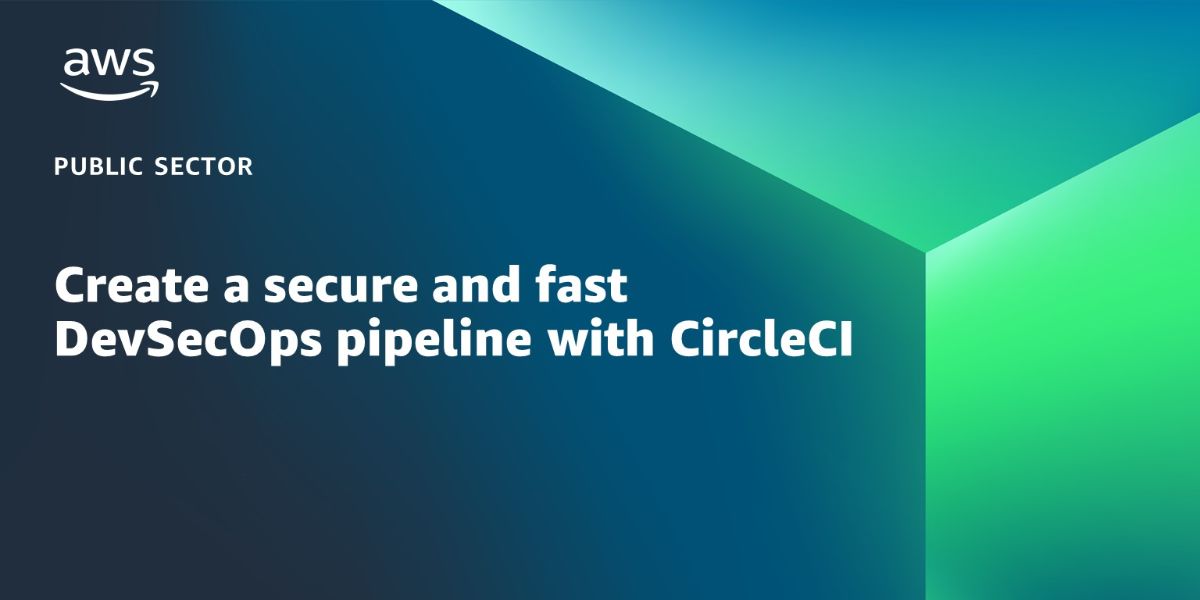AWS Public Sector Blog
Category: Technical How-to
Move data in and out of AWS GovCloud (US) with AWS DataSync
As public sector customers find increasing need to move data between the AWS GovCloud (US) partition and the standard partition, they need tools to help them lower their operational burden. In this blog post, I walk through how to use AWS DataSync to move data on network file system (NFS) shares between the two partitions.
Virtualizing the satellite ground segment with AWS
As the number of spacecraft and spacecraft missions accelerates, moving aerospace and satellite operations to the cloud via digital transformation — including virtualizing the ground segment — is key for economic viability. In this blog post, we explain the benefits of virtualizing the ground segment in the cloud and present the core components of a reference architecture that uses AWS to support several stages of a comprehensive ground segment virtualization. Then, working from this model, we present additional reference architectures for virtualizing the ground segment that can accommodate various requirements and usage scenarios.
Create a common operating picture for search and rescue at the edge with AWS
In a recent disaster response field testing exercise (FTX), the AWS Global Social Impact Solutions (GSI) team developed a prototype cloud architecture and tested it in a search and rescue (SAR) scenario simulating a missing responder crisis. This blog post walks through the SAR simulation and result, and provides an overview of the AWS services and technical architecture components the GSI team used to provide a hybrid edge/cloud COP solution that helped locate the missing team member in the simulated scenario within 20 minutes.
Create a secure and fast DevSecOps pipeline with CircleCI
In this blog post, we explain how government agencies can accelerate their development workflows while maintaining strict application and operational security using the principles of continuous integration and continuous delivery (CI/CD) and DevSecOps. We provide a solution to walk you through how you can quickly set up your own DevSecOps pipeline that incorporates AWS and third-party security tools to give you a fast, flexible, and secure software delivery process.
How to deliver performant GIS desktop applications with Amazon AppStream 2.0
Geospatial datasets are increasingly large, reaching terabyte and even petabyte scale, which can cause many challenges for geospatial analysts and educators–but Amazon AppStream 2.0 can provide some solutions. In this blog post, we walk through how to deploy QGIS, a no cost, open-source geospatial information system (GIS) application used by geospatial analysts, in Amazon AppStream 2.0. We also load an example dataset to demonstrate how desktop GIS application users can access large, cloud-hosted geospatial datasets with high performance by keeping the data and compute components together on the cloud, and streaming the desktop application instead of downloading the data itself.
How UK public sector customers can implement NCSC security principles to protect data transfers to AWS
To drive innovation and optimise operations in the Amazon Web Services (AWS) Cloud, UK public sector organizations need to transfer data quickly and safely, in accordance with the National Cyber Security Centre (NCSC)’s guidance on how to configure, deploy, and use cloud services securely. The NCSC provides security guidance for protecting government systems, planning for cyber incidents, and more. In this post, we cover how you can configure AWS services—like AWS DataSync, AWS Storage Gateway, and AWS Transfer Family—to align your data transfer solution with the NCSC’s cloud security principles, as understanding these configurations is important to protect data and meet requirements for local force accreditation.
AWS Secure Environment Accelerator (ASEA) connectivity with VMware Cloud on AWS
The AWS Secure Environment Accelerator (ASEA) landing zone helps customers deploy and operate a secure multi-account, multi-Region AWS environment. Governments in Canada and others around the world currently use the ASEA, with over 30 deployments to date. Some of these same customers also use VMware Cloud on AWS to integrate on-premises vSphere environments, allowing them to move existing workloads to the cloud more quickly. Integrating your VMware workload with natively managed AWS services can help you reduce your operational overhead and optimize your total cost of ownership (TCO). In this blog post, we review the technical considerations related to integrating your ASEA landing zone with your VMware Cloud on the AWS environment.
How to set up Galaxy for research on AWS using Amazon Lightsail
Galaxy is a scientific workflow, data integration, and digital preservation platform that aims to make computational biology accessible to research scientists that do not have computer programming or systems administration experience. Although it was initially developed for genomics research, it is largely domain agnostic and is now used as a general bioinformatics workflow management system, running on everything from academic mainframes to personal computers. But researchers and organizations may worry about capacity and the accessibility of compute power for those with limited or restrictive budgets. In this blog post, we explain how to implement Galaxy on the cloud at a predictable cost within your research or grant budget with Amazon Lightsail.
Building a serverless web application architecture for the AWS Secure Environment Accelerator (ASEA)
Government departments work hard to meet required security framework controls for cloud services, and obtaining an Authority to Operate (ATO) can sometimes take up to 18 months. To assist with this process, AWS developed the open-source AWS Secure Environment Accelerator (ASEA), a tool designed to help deploy and operate secure multi-account AWS environments. This post describes how government departments can more simply deploy a web application consisting of a single-page application (SPA), backend API, and database within ASEA.
How nonprofits can automate tax-exempt status across AWS accounts
Many nonprofits and other tax-exempt organizations need to make sure their tax status is correct across their Amazon Web Services (AWS) accounts. A new tax analyzer solution automatically detects the tax status of all AWS accounts across an organization. In this blog post, discover how this simple solution identifies which AWS accounts across an organization are paying sales tax, and learn how this solution can quickly remediate tax status by opening an AWS support case automatically.









